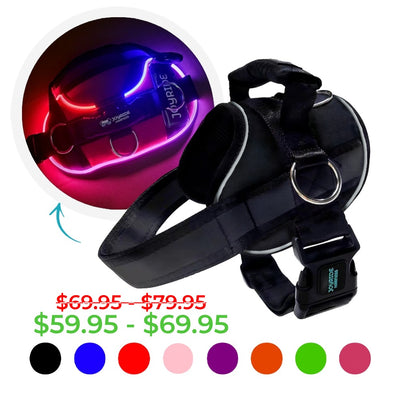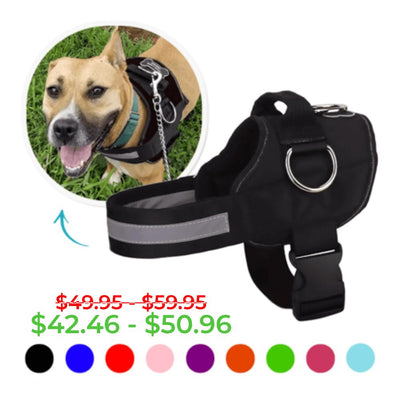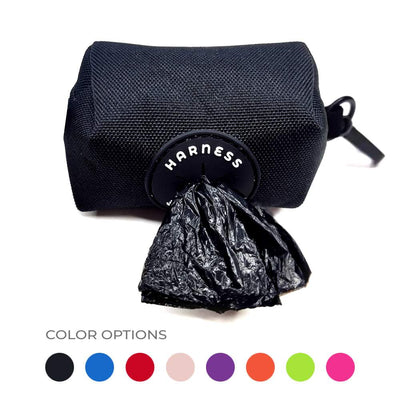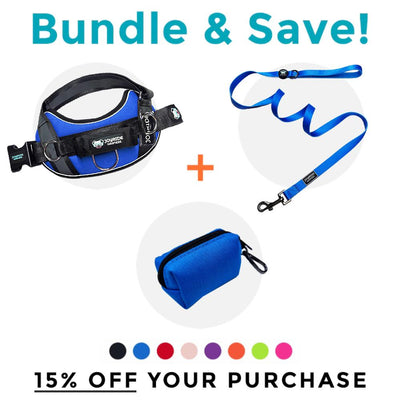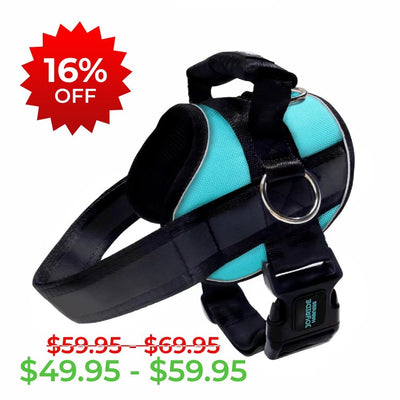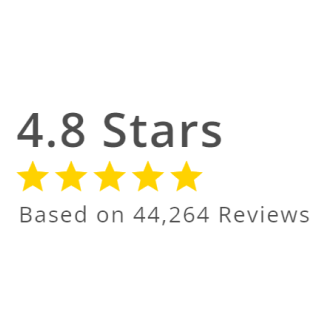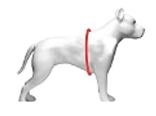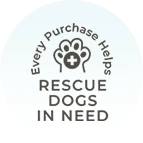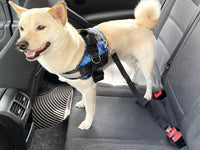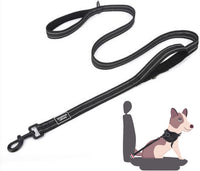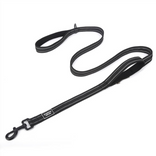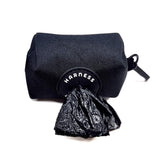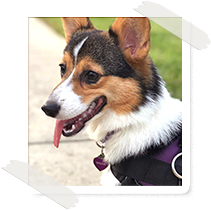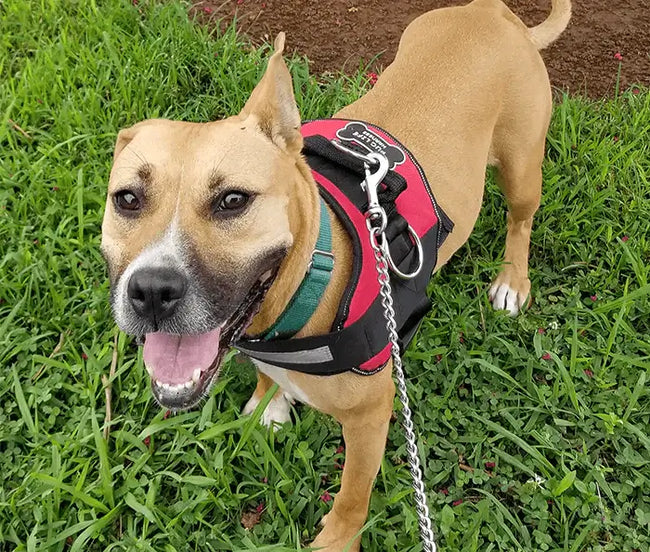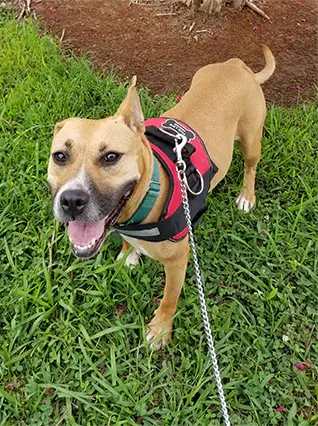What Does Dog Anxiety Look Like?

Humans aren’t the only species with anxiety, dogs get it too. Anxiety comes in many forms and can affect each breed of dog differently.
You might be wondering if your dog has anxiety and asking questions like:
- What are the symptoms of dog anxiety?
- What causes anxiety in dogs?
- How can I help my dog with its anxiety?
In this blog, we will explore these questions and give you guidance so you can care for your dog.
What are the Symptoms of Dog Anxiety?
According to the Animal Surgical and Orthopedic Center, the symptoms of dog anxiety vary from dog to dog. The biggest thing to look out for is your dog’s body language.
Here are the telltale symptoms to look out for:
- Panting
- Pacing or restlessness
- Barking
- Whining
- Ears back and/or tail tucked
- Shaking or trembling
- Drooling
- Disinterest in food
- Aggression
- Urinating or defecating in the house/where they shouldn’t
- Destructive behavior (chewing, destruction, etc.)
- Excessive barking
- Repetitive or compulsive behaviors
- Constantly looking for an escape
- Hiding
- Digging or trying to escape enclosures
Sometimes, dog anxiety is temporary when they’re introduced to a new environment, routine, or activity. However, if the anxiety is ongoing, it can be a sign of something more serious, according to the American Kennel Club.
Of these symptoms, PetMD says “the most common behaviors are elimination (i.e., urination and/or bowel movements),” and destruction and excessive vocalization such as barking or crying as well as panting and pacing.
The most dangerous of these symptoms is aggression and it can be targeted directly or indirectly.
“Direct aggression occurs when a dog acts aggressively toward people or other animals,” states the American Kennel Club. “Indirect aggression can be equally dangerous, and often happens when a person comes between the dog and the source of the dog’s aggression, such as another dog.”
What Causes Anxiety in Dogs?
The American Kennel Club and Animal Surgical and Orthopedic Center note that there are many forms of dog anxiety, including:
- Separation anxiety: This occurs when the dog is separated from you or other regular caretakers and left alone. This type of anxiety is estimated to affect around 14 percent of dogs. With a lot of dog owners having worked or still working from home due to the COVID-19 pandemic, this type of dog anxiety is expected to rise.
- Environmental anxiety: This is often the result of an unfamiliar place, disruption to a familiar scenario, or somewhere with perceived danger for the dog. Vet clinics, for example, cause anxiety in dogs. Sirens, alarms, fireworks, or thunder can also cause this kind of anxiety. Newly adopted shelter dogs can be anxious when they’re new to your home, here are some starting points to help build trust and ease that anxiety.
- Social anxiety: When your dog is nervous around other dogs or people, this is known as social anxiety. This may be due to past trauma or not being socialized frequently.
- Generalized anxiety: This can appear suddenly with no known cause or trigger.
- Age-related anxiety: Older dogs may be affected with cognitive dysfunction syndrome (CDS), leading to trouble with memory, learning, perception, and awareness, similar to Alzheimer’s disease in humans. As a result, senior dogs can become confused, overwhelmed, and thus anxious.
How Can I Help my Dog with their Anxiety?
There’s good news, as there are ways to treat and help reduce your dog’s anxiety.
However, before you do so, the American Society for the Prevention of Cruelty to Animals (ASPCA) recommends you pay a visit to your vet to determine if medical issues are affecting your dog. Next, they recommend ruling out behavioral issues due to environmental factors, which include living conditions and the dog’s genetic make-up.
Once you’ve gone through these steps to determine that your dog has anxiety, you can do several things to soothe it:
- Physical and mental stimulation: Providing lots of physical and mental stimulation can enrich your dog’s life, decrease stress, and allow them to focus on normal dog behaviors. Keep your dog busy and happy by incorporating additional aerobic activity into your routine, including toys, exercise, and perhaps even additional training. By keeping them busy or helping them to relieve extra energy, it can reduce anxiety. We have a wide selection of harnesses and accessories to help get your dog ready for exercise.
- Desensitization and counterconditioning: These methods are effective ways to desensitize your dog to the ‘triggers’ that cause anxiety. However, it’s tricky and the ASPCA recommends that you consult a Certified Applied Animal Behaviorist (CAAB or ACAAB) or a board-certified veterinary behaviorist (Dip ACVB). If you can’t find a behaviorist, seek a Certified Professional Dog Trainer (CPDT) that is trained in these methods, as not all are. Positive training makes a big difference.
- Medication and supplements: Medications can be very helpful for all dogs, especially ones with severe anxiety, while a dog with mild separation anxiety might benefit from supplement therapy alone. Always consult with your veterinarian or a veterinary behaviorist before giving your dog any medication or supplements for anxiety.
- Physical touch: Simply touching and even massaging your dog can have short-term calming effects. As you practice the massage, you may also be able to tell where your dog is holding its stress so you can work toward relieving that tension.
And Remember
Anxiety is never easy and seeing your dog go through it without being able to verbalize why can also cause you immense stress. But there are options.
Keep in mind that anxious behaviors are not the result of disobedience or spite, so do not scold your dog. Their behaviors are distress responses. If you punish them, it could instigate the problem. Follow some of our tips and tricks for taking care of your dog.
Approach their anxiety with love and tenderness and lean on your veterinarian and other trained professionals for help. In doing so, you can find the best solution for your dog to alleviate their anxiety in favor of a happy, healthier life!
For more doggie photos and pup-related fun, follow us on Instagram at @joyrideharness. And for a more detailed blog post about finding the best size dog harness for your pup, check out this blog post!
